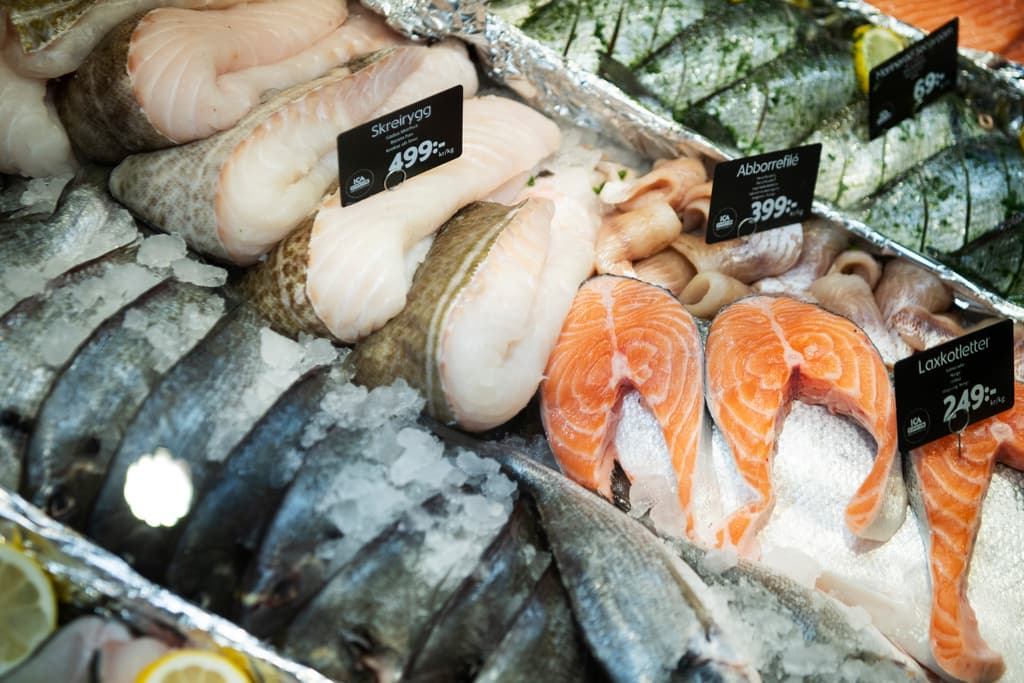Swedes eat less fish and shellfish than the National Food Agency's dietary guidelines of two to three times a week. The goal is to increase consumption. However, it is not unproblematic since it is not possible to increase fishing in many cases. Therefore, it is important how it is done, says Irene Blom, an advisor at the National Food Agency's unit for sustainable food consumption.
Instead of eating salmon every week, you can vary with herring or mackerel. They are fatty so that you get the same beneficial fats, she says and develops:
That you shift from such fish and shellfish species that have a relatively high climate and environmental impact – which we eat a lot of today – to those with less impact.
Difficult for the consumer
Eating fish is healthy – at the same time, there are many aspects to consider, says Johanna Hållén, Secretary-General of the Swedish Consumer Association.
As a consumer, I should keep track of whether I and my children get enough nutrients and eat good food. At the same time, we must ensure that we do not get too many harmful substances that actually exist in some fish and shellfish, and we should think about the environmental aspect and the survival of fish stocks.
Companies must report in writing, for example, on the packaging, where the fishing took place and with which gear. Hållén believes that trade has a great responsibility to take in fish that is environmentally labeled and from sustainable stocks. Furthermore, politicians and decision-makers should ensure that stocks are protected and that environmentally hazardous substances are not released into the oceans, she emphasizes.
It is not us consumers who should take the responsibility.
Yellow light for salmon
Today, Swedes eat most salmon and shrimp. But Norwegian farmed salmon has a yellow light in WWF's fish guide and is recommended to be eaten only one to three times a year, for example, on holidays.
Since a few years, certifications such as MSC, ASC, and Krav no longer automatically get a green light in the fish guide. Even if the fish is certified but has a yellow or red light, it is not sustainable, according to Inger Melander, fish expert at the World Wildlife Fund WWF.
Eating fish a few times a week and considering sustainability is difficult, says Melander. The advice to eat fish two to three times a week is good, but then other aspects must also be fulfilled.
Then you must ensure that the fish does not contain toxins and that it comes from sustainable fishing. Where we are now, it is not necessarily compatible.
Eat fish and shellfish 2-3 times a week. Vary between fatty and lean fish species. You should choose environmentally labeled fish in the form of labels MSC, ASC, and Krav.
Certain fish species contain more or less environmental pollutants such as dioxins, PCBs, PFAS, and mercury.
Wild-caught fish from Lake Vänern, Lake Vättern, and the Baltic Sea can be eaten once a week for most people. If you are a child, young, pregnant, breastfeeding, or want to become pregnant in the future, you should eat these high-risk fish 2-3 times a year.
Source: National Food Agency
Green light is a good choice and recommended according to WWF. Yellow light signals caution and should only be eaten 1-3 times a year, for example, on holidays. Red light means that the species should be avoided altogether.
Fish and shellfish species are assessed according to three criteria. How the stocks are doing, how effective the management and control are, and how the fishing affects the ecosystem. When it comes to farmed species, the origin of the feed and the environmental impact of the farming are assessed.
A species can have multiple colors depending on where and how it is caught or farmed.
If you cannot find seafood with a green light, the labels MSC, ASC, and Krav are recommended as a second-hand choice.
Examples from WWF's Fish Guide:
Alaska pollock: yellow and red light.
Cod, Pacific cod: yellow and red light.
Shrimp, North Sea shrimp: yellow and red light.
Freshwater crayfish in Swedish waters: red light.
Wild-caught signal crayfish in Swedish lakes: yellow light.
Crayfish caught with traps in Turkey: green light.





